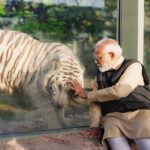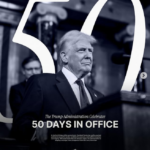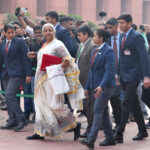Recent Posts
India Foreign Service
The Indian Foreign Service (abbreviated as IFS) is the foreign service under Grade A and Grade B of the Central Civil Services of the executive branch of the Government of India. It is the body of career diplomats of India.
The Indian Foreign Service is part of the Central Civil Services of the Government of India. The Foreign Secretary of India is the administrative head of the Indian Foreign Service.
SERVICE OVERVIEW
Abbreviation : I.F.S.
Formed : 9 October 1946
Country : India
Training Ground : Lal Bahadur Shastri National Academy of Administration, Mussoorie, Foreign Service Institute, New Delhi
Controlling Authority : Ministry of External Affairs
Legal personality : Governmental: Government service, General nature
Diplomacy, Peacemakers, Foreign policy and relations, Advisors to Ministers
Service Chief : Foreign Secretary
Current: Ranjan Mathai
Head of the Civil Services : Cabinet Secretary
Current : Ajit Seth
HISTORY
On 13 September 1783, the board of directors of the East India Company passed a resolution at Fort William, Calcutta (now Kolkata), to create a department, which could help “relieve the pressure” on the Warren Hastings administration in conducting its “secret and political business.” Although established by the Company, the Indian Foreign Department conducted business with foreign European powers. From the very beginning, a distinction was maintained between the foreign and political functions of the Foreign Department; relations with all “Asiatic powers” (including native princely states) were treated as political, while relations with European powers were treated as foreign.
In 1843, the Governor-General of India, Edward Law, 1st Earl of Ellenborough carried out administrative reforms, organizing the Secretariat of the Government into four departments: Foreign, Home, Finance, and Military. Each was headed by a secretary-level officer. The Foreign Department Secretary was entrusted with the “conduct of all correspondence belonging to the external and internal diplomatic relations of the government.”
The Government of India Act 1935 attempted to delineate more clearly functions of the foreign and political wings of the Foreign Department, it was soon realized that it was administratively imperative to completely bifurcate the department. Consequently, the External Affairs Department was set up separately under the direct charge of the Governor-General.
The idea of establishing a separate diplomatic service to handle the external activities of the government of India originated from a note dated 30 September 1944, recorded by Lieutenant-General T. J. Hutton, the Secretary of the Planning and Development Department. When this note was referred to the Department of External Affairs for comments, Olaf Caroe, the Foreign Secretary, recorded his comments in an exhaustive note detailing the scope, composition and functions of the proposed service. Caroe pointed out that as India emerged as autonomous, it was imperative to build up a system of representation abroad that would be in complete harmony with the objectives of the future government.
On 9 October 1946, on the eve of Indian independence, the Indian government established the Indian Foreign Service for India’s diplomatic, consular and commercial representation overseas. With independence, there was a near-complete transition of the Foreign and Political Department into what then became the new Ministry of External Affairs and Commonwealth Relations.
SELECTION
In 1948 the first group of Indian Foreign Service officers recruited under the combined Civil Services Examination administered by the Union Public Service Commission joined the service. This exam is still used to select new IFS officers.
The Civil Services Examination is used for recruitment for many Indian administrative bodies. It has three stages – a preliminary exam, a main exam, and an interview – and is known for being extremely challenging.
The entire selection process lasts for about 12 months. About 800 to 900 candidates are finally selected each year out of the nearly 400,000, but only a good rank guarantees an IFS selection— an acceptance rate of 0.01 percent.
In recent years, the intake into the Indian Foreign Service has averaged around 20 persons annually. The present cadre strength of the service stands at approximately 600 officers manning around 162 Indian missions and posts abroad and the various posts in the Ministry of External Affairs at home. The Times of India reported a shortage of Indian diplomats.
TRAINING
On acceptance to the Foreign Service, new entrants undergo significant training. The entrants undergo a probationary period (and are referred to as probationers). Training begins at the Lal Bahadur Shastri National Academy of Administration in Mussoorie, where members of many elite Indian civil service organizations are trained.
After completing the Lal Bahadur Shastri National Academy of Administration, the probationers join the Foreign Service Institute in New Delhi for more training as well as attachments with different government bodies and tours both in India and abroad. The entire training programme is for a period of 36 months.
At the conclusion of the training programme the officer is assigned a compulsory foreign language (CFL). After a brief period of desk attachment in the Ministry of External Affairs, the officer is posted to an Indian diplomatic mission abroad where the CFL is the native language. There the officer undergoes language training and is expected to develop proficiency in his CFL and pass an examination before being allowed to continue in the service.
CAREER AND RANK STRUCTURE
At an embassy
- Third Secretary (entry level)
- Second Secretary (promotion upon being confirmed in service)
- First Secretary
- Counsellor
- Minister
- Deputy Chief of Mission/Deputy High Commissioner/Deputy Permanent Representative
- Ambassador/High Commissioner/Permanent Representative
At a consulate
- Vice Consul
- Consul
- Consul General
At the Ministry of External Affairs
- Under Secretary
- Deputy Secretary
- Director
- Joint Secretary
- Additional Secretary
- Secretary






















































